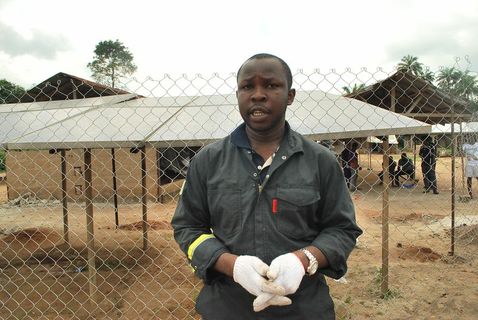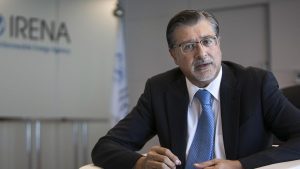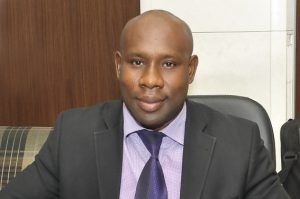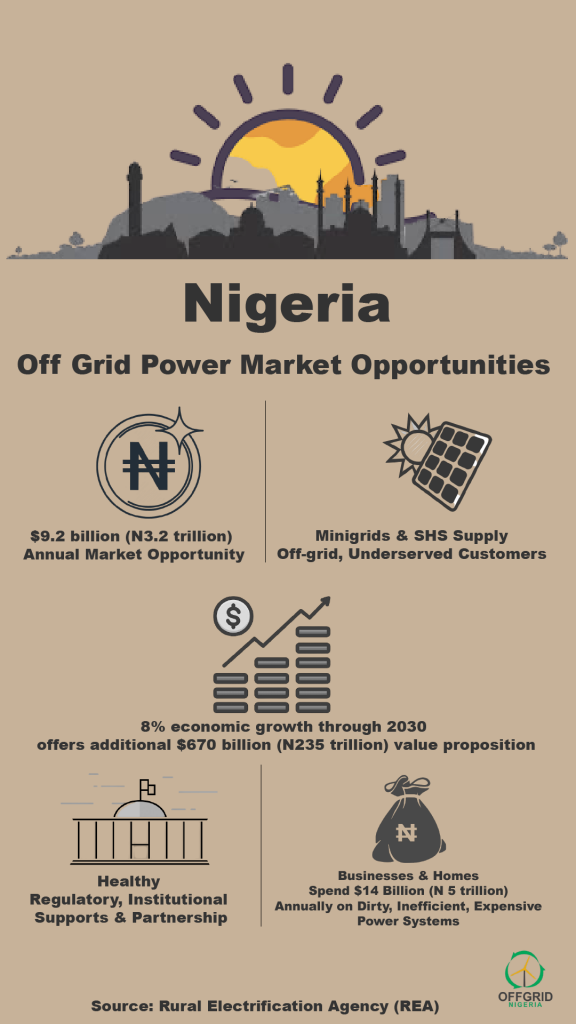What would it take to have 3.6 million Nigerians (2% of 180 million) constantly supplied cost-effective electricity from the sun? How long would it take to achieve this, and at what considerations? Brilliant and hugely impressive CEO of GVE Projects Limited, Ifeanyi Orajaka, whose firm grew from the dormitories of the Federal University of Technology Owerri (FUTO), to now provide solar electricity to 6 communities in 5 different states of Nigeria, provided answers to these questions in an interview with OGN. Excerpts.
Could you tell us about yourself and the entity you represent?
My name is Ifeanyi Orajaka, I’m the Founder/CEO of GVE Projects Limited Nigeria, which was founded in 2009 by three young undergraduates of the FUT, Owerri.
Basically, GVE is a leading innovative renewable energy solution provider in West Africa. We provide solutions for residential, commercial, and most importantly to us which we are very passionate about, rural off grid communities.
Over the years, the company has emerged from just three undergraduates to a team of 30 with renewable energy solutions and systems deployed across the country.

Was there a defining reason for setting up GVE?
Like most young undergraduates, particularly engineering, the ultimate goal would always be to get good grades, graduate and work with the Shells and Mobils of this world, we weren’t far from that. But we were privileged to be doing our undergrad internship in one of the leading oil majors when we came upon something that made us decide to have a career shift.
We were privileged to visit oil facilities in several areas in the Niger Delta and discovered that although these facilities were fully lit up, communities that were close to them by 500 metres or one kilometre were in abject energy poverty. During the day, you will see the people, but once it was dusk and everywhere became dark, there would be no life anymore, and that struck us on how best to use our young engineering skills to create solutions.
Fortunately, at that time, the Institute of Electrical Electronics Engineers came up with what was called the ‘president’s change the world award’ which aimed at identifying young engineering students that could use their engineering skills to change the world and we applied.
So, you put in for that competition knowing entries could come from the likes of MIT?
Yes, we were able to put together a concept note for our solution which was to provide electricity to these communities using solar mini grids. Surprisingly, after a very competitive process we emerged one of the finalists out of over 200 entries globally including entries from MIT and others, and that was a very big nudge to us.
We were very excited with that, we got $1000 cash award and certificate, but few months after, we realised the money and paper certificate had not actually solved the problem, so we went back to the drawing board to fix several parts of the puzzle.
We acquired more knowledge on project management and accounting and subsequently came up with a project plan and budget for the pilot phase, and applied to the Institute of Electrical Electronics Engineers which graciously awarded us a grant funding of slightly below $45,000. With that, the UNDP and Bank of Industry access to renewable energy programme also came up at the same time and we applied and was selected as one of the 11 winners, they came up with another $30,000 equivalent grant and we merged both resources to embark on the pilot project.
Interestingly, part of the support from the UNDP was a consultancy support from Delloite to do a feasibility study of all the winning projects and we came to discover that energy poverty is actually a national problem with slightly 60 per cent of the population without electricity.
“We got $1000 cash award and certificate, but few months after, we realised the money and paper certificate had not actually solved the problem, so we went back to the drawing board to fix several parts of the puzzle.”
Was this discovery striking to you?
Yes, it reshaped our minds from seeing our solution as a CSR initiative to one we can commercialise to provide sustainable solution, and with that, we worked with Delloite to develop the business model to go with.
One of the successes for us is that from 2009 when we conceived the idea and at which time mini grid was seen as a strange development and nobody knew what it was all about even the regulatory authorities, and now in 2017, we have a mini grid regulation though still in draft but soon to be ratified.
For us, that is a modest achievement we drove from our undergraduate dormitories to actually having the potential of making a nationwide impact and the regulator identifying it as a possible means to ending energy poverty in Nigeria.
Is this all about your success stories that you’re most proud of?
The second is that we’ve been able to show that beyond just one community and region, the technology and business model is very sound and viable for all the geo-political regions of Nigeria. As at today, we have presence in four of the regions of the country and our projects have remained models and success stories people refer to in terms of the efficacy of renewable energy solutions.
We’ve come a long way but reckon that we’ve not even scratched the surface of the market potentials because the challenge is quite significant and would require a whole lot of efforts to make this count.
“We’ve been able to show that beyond just one community and region, the technology and business model is very sound and viable for all the geo-political regions of Nigeria.”
Internally, what are your plans?
We have a goal of providing reliable energy access to 2 per cent of Nigeria’s 180 million population in the next 6 years.
We know it is quite ambitious but then, if your goals don’t scare you, they are not good enough goals. We have gone through what I consider the most difficult phase and over the years perfected our operations, we have got to that stage where it is now more or less plug and play.
While not disclosing your trade secrets, what concrete plans have you thought out for this?
For us, at the moment, we have a plan that has undergone several levels of scrutiny by reputable international organisations like the US Power Africa, Delloite, GIZ, and EU Nigerian Energy Support Programme.
We are actually partnering with these agencies as well and for us it is a combination of energy access initiative and urban rooftop initiative to drive the actualisation of this very ambitious target.
Are you able to quantify the impact of your solution on the rural communities you’ve worked in?
On the energy access space, we currently have access to 6 different communities in 5 states. We also have a client on the energy access space where we serve as a micro utility of slightly over 2000 households and this year, we have actually started our ambitious plan to serve 2 per cent of the population and by that we are on track to extend our services and presence to 11 additional communities and cumulatively serving additional 12,000 households which will bring our community client base to 14,000.

Are the 6 communities you presently serve off grid rural communities or a hybrid?
The 6 communities we current have presence in are 100 per cent rural and off the grid. In most cases they are within 7 to 10 kilometres from the closest grid infrastructure and that is because we don’t want to get into any legal or regulatory dispute with any of the Discos.
If you would consider the urban centres in your ambitious expansion plans, have you then taken into view these legal issues?
Yes, I did mention early that the mini grid regulation would come into law, and that would provide a lot more clarity and give us leverage to venture into areas that either have bad grid connections and which are also commercially viable.
We have also started discussions with some of the Discos on effective ways to work together to drive value in the power industry through a mix of solutions.
What really are your challenges running a RE firm in Nigeria?
Like every businesses in Nigeria, the challenges are enormous, but for us, the most striking challenge at the moment is the issue of currency risk and fluctuations. It is waning the confidence of our external investors in bringing foreign capitals for projects and affecting the procurement process for equipment which a significant number of them are imported.
I would say that we have been privileged to an extent because we have been able to attract the NIPC with our innovation, which has provided us with the pioneer status to help cushion some of the start-up challenges. We have been enjoying tax exemptions from inception to date.
Equally, there are other issues around duty and seamless custom clearance processes. There are also language barriers because we deploy to all parts of the country and try to use local skills in the implementation, so getting the local skillsets is a challenge.
“We have gone through what I consider the most difficult phase and over the years perfected our operations, we have got to that stage where it is more or less plug and play.”
Do you think this sector has really taken off?
Yes, in terms of its value and technology. It has all the potentials to get us from where we are of about 4000 megawatts of generation and 60 per cent lack of energy access in the country, to grow very fast to actually help solve the issues.
There are still teething challenges that need to be surmounted but I would say with bold initiatives like ours, we have moved the industry from taking a backstage to now being looked at as a means to solving our energy challenges.
Does this market need any form of stimulation from the government?
Well, in terms of the market’s readiness, there is a lot of mixed feelings from several failed projects that were commissioned by the government in the past, but graciously a lot of serious-minded players are now very active in the sector and implementing projects that are viable and can serve as reference points.
Gradually, people are beginning to believe in the efficacy of this solution and this is becoming transformatory to getting the market move off the ground. The government on its parts, can now pay more attention to the sector just like it did to the mobile telecoms sector, to help it scale up.
If the government shows more interests and attention to the market on the basis of its merits, and equally move away from aide-related projects to projects that are commercially sustainable from design, that would help move a lot of bad practitioners that are in the sector and benefiting from it, this would also significantly drive efficiency.





